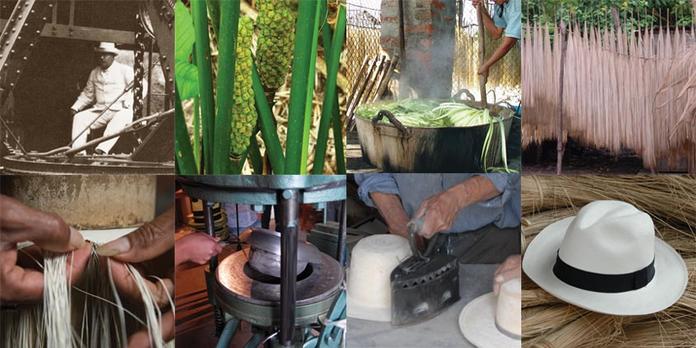© 2014 Paulmann Hats. All rights reserved. Website design by Manny Lopez
First, Panama Hats do not originate from Panama but are from Ecuador.
Panama Hats as we know them today have been hand woven in Ecuador since the 1600’s but some historians believe their history goes back to ancient times. The hats were brought to Panama and other Latin America countries through the trade routes set up by the Spanish empire. The hats first became popular in the 1800’s with the gold miners heading to California by way of Panama and then internationally when it was introduced at the 1855 World Exhibition in Paris. The United States government purchased 50,000 hats from Ecuador for its troops fighting in the Spanish-American War (1898).
The biggest global boost to the hats came in 1906 when President Theodore Roosevelt wore one of these hats while visiting the construction of the Panama Canal. His picture traveled around the world and since then these Ecuadorian hats have been called Panama hats. The Panama hat has been a favorite of many famous people through history including Napoleon, Ernest Hemingway, Winston Churchill, Nikita Khrushchev, Harry Truman, Paul Newman and Alberto Santos Dumont. Today, the classics are still being worn by dignitaries and celebrities alike while new hipper versions (styles and colors) are being worn by young pop and movie stars on and off the stage.
Panama hats are made of natural fibers from the Toquilla Palm, called Palmata Carludovica, which is grown in fields and the wild near the West coast of Ecuador often only accessible by horse or donkey.
People from a whole village live from working on the Paja Toquilla (Toquilla straw). Only the unfolded shoots are used and are first split into finer strands by skilled fingers or with the help of a metal point. The finest strands are reserved for the finest hats while the leaves that are too soft or of inferior quality are separated and used for other purposes. The leaves are then cooked in boiling water after which they are hung up to dry. During this process they roll up vertically and form weavable strings but must be shaken regularly to avoid them sticking together. Once these strings, or paja toquilla, are dried, they are sorted and bundled up for transport to the weavers located in numerous towns and villages including Pile, Motecristi, Cuenca and Otavalo.
The weavers inspect the paja toquilla and pay according to the quality and fineness of the straw fibers. The fibers are then separated from each other and moistened before being woven into a hat with the help of a wooden form to get the right size and shape. Weaving begins with the rosetta in the middle of the crown and then radiates outward forming concentric circles known as vueltas continuing through to the rim of the hat.
These hat bodies with their straw fibers sticking out are washed and sometimes bleached or died to achieve a consistent color. They then need to be carefully trimmed and have their straw fibers back woven to avoid fraying. This is especially difficult with the finer hats and is often handled by artisans that specialize in this work.
From here the hats may be further bleached or died and then cleaned, dried and steam formed or pressed by ironing. The final finishing step is to install their outside and inside bands and labels. They are then packed in boxes and shipped throughout the world.
For a hat of standard quality, a skilled weaver needs about 4 hours. Fine Montecristi hats can only be woven by the best weavers using the finest fibers and can take up to several months. The highest quality hats have a silky smooth texture where the weave is barely visible unless you hold them up to the light when you can see the fine weaving and “vueltas” or “carreras” (concentric rings). Hat quality is often judged by the number of vueltas per inch. A standard hat will have less than 10 vueltas whereas a finer Montecristi will have around 40.
The ancient art of weaving these hats was almost lost in recent generations, but thankfully with the revival of the Panama hat and increased global sales, the art is being revived and taught to younger generations as families and communities can make a decent living from this art
once again.
